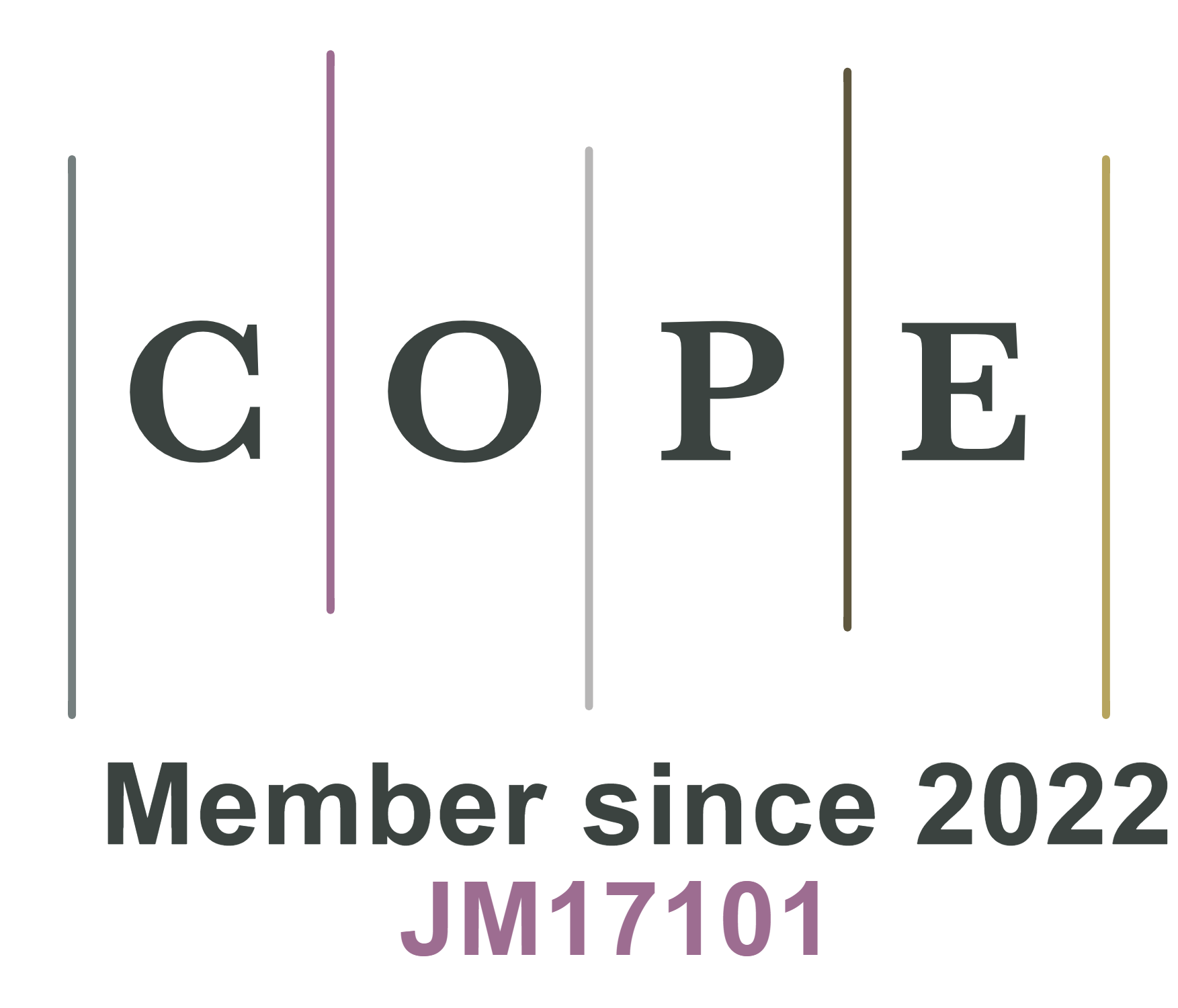Anion-rich Ir-doped CoOx for boosting oxygen evolution reaction in water electrolysis
Abstract
Owing to the sluggish kinetics of oxygen evolution reaction (OER) in electrochemical water electrolysis process, efficient and durable OER electrocatalysts are crucially needed. However, it is a great challenge to improve the comprehensive performance of OER electrocatalysts by utilizing various synergistic methodologies. To solve these issues, herein, Ir-doped Co-based compounds with regulated anions were synthesized using a coprecipitation method as the electrodes for boosting the OERs. Doping with Ir atoms modified the coordination environments and electronic structures of the CoOx-CO32- lattice, and the generated Co3+ species promoted the generation of active species for the OER. It is worthwhile noting that a hybrid crystalline/amorphous IrCoOx-CO32- compound was obtained with an Ir content of 10.09 wt.% and a large amount of Co3+, and demonstrated excellent electrocatalytic OER performance. The overpotential required for the developed IrCoOx-CO32- to achieve 10 mA cm-2 was as low as 207 mV with a very low Tafel slope of 61.7 mV dec-1, which is better than the commercial IrO2. Furthermore, anions created in the IrCoOx significantly promoted the OER, and their effects were decreased in the order of CO32- > PO43- > OH-. This work clarifies the synergistic mechanism of cations and anions on the electrocatalytic OER performance of Co-based compounds, providing new insights for designs of high-performance OER electrocatalysts for water electrolysis.
Keywords
INTRODUCTION
Hydrogen as a green, sustainable, and stable renewable energy source has become the main focus for achieving the global goal of carbon neutrality. Currently water electrolysis using green electricity is a key development direction for the green hydrogen industry[1-3]. However, oxygen evolution reaction (OER), one of the key processes that occur at the anode side of water electrolysis cells, involves a four-electron process with sluggish kinetics, severely affecting the successful applications of water electrolysis for hydrogen production[4-6]. In the past decades, a number of OER electrocatalysts have been developed to increase the kinetics and chemical stability of electrodes in the electrolyte, and RuO2 and IrO2 are regarded as the two best OER electrocatalysts with comprehensive performance owing to their excellent electrocatalytic activity and stability[7,8]. However, the rarity and high price of Ru and Ir severely prevent the widespread applications of these noble metal-based oxides for water electrolysis. Therefore, development of other high-performance and cost-effective OER electrocatalysts becomes a critical issue for improving the efficiency of the overall water electrolysis process.
Recently non-noble transition metal materials have been explored as OER electrocatalysts for industrial applications, mainly because of their low-cost and adjustable d-orbital electronic structure[9,10]. Among those commonly reported electrocatalysts, Co-based compounds show remarkable electrocatalytic performance for the OER, which is mainly attributed to the variable valence states of Co ions[11-14]. Compared with ions of other transition metal-based compounds with similar structures, Co3+ ions exhibit not only a good adsorption ability for reactants, but also high electrophilicity[15-17]. However, the simple Co compounds often suffer from their unstable structures, poor conductivity, and low activity. Also the generation and conversion of different intermediates in the OER for these Co compounds hinder the low-cost green hydrogen production. To address these issues, extensive efforts are being made to enrich the active sites and improve conductivities of electrocatalysts by adding new components, modifying microstructures, adding defects, single atom engineering, and various functional modifications. Especially, doping noble metals into non-noble metal-based electrocatalysts has been considered as one of the most promising strategies for accelerating the OER recently. It is because this method not only allows for easy adjustment of the electronic state of electrocatalysts to stimulate active sites in the matrix, but also uses the doped noble metals as active sites[18,19]. For example, doping one of the stable elements such as Ir into non-noble metal-based electrocatalysts results in excellent OER electrocatalytic performance[20-28]. In addition to doping high-valence noble metals, adjusting the types of oxygen-containing anions is another favored method. For example, oxygen-containing anions such as carbonates and phosphates can accelerate the surface oxidation of Co-based compounds and much higher valence states can be achieved during the OER process[29,30]. These modifications can enable Co-based compounds to form more Co3+ in the OER, which is beneficial for electrocatalytic performance. Therefore, simultaneous doping of Ir and oxygen-containing anions may lead to dramatic modifications in the electronic structures of Co-based compounds and improvements in their OER electrocatalytic performance.
In this study, coprecipitation - a simple, cost-effective, and easily scalable approach - was chosen was chosen to synthesize IrCoOx-CO32-, IrCoOx-PO43-, IrCoOx-OH-, and CoOx-CO32- compounds with varying Ir doping contents and different anions. Among all the as-prepared compounds, we identified that the IrCoOx-CO32- exhibited an excellent electrocatalytic activity for the OER in 1 M KOH electrolyte and an outstanding stability during continuous operation at 100 mA cm-2 for 100 h. The IrCoOx-CO32- contained numerous well-dispersed Ir atoms and copious anionic carbonates stemming from the use of single nontoxic sodium carbonate as a precipitator, which increased the electron transfer efficiency for the OER. Both the Ir and Co served as active sites in the OER, and the Ir accelerated the generation of Co4+ active species. Such the synergistic effects of cations and anions on the deep reconstruction of Co-based OER electrocatalysts significantly enhance water electrolysis process.
EXPERIMENTAL
Materials
Cobalt nitrate hexahydrate [Co(NO3)2·6H2O, AR], hydrogen hexachloroiridate (IV) hydrate (H2IrCl6·xH2O, Ir ≥ 36%), sodium carbonate (Na2CO3, AR), sodium phosphate (Na3PO4, AR), sodium hydroxide (NaOH, AR) and Nafion® 117 (~5 wt%) were acquired from Aladdin; Potassium hydroxide (KOH, 95%) and iridium oxide (IrO2, 99.9%) were acquired from Shanghai Macklin Biochemical Co., Ltd. Without additional processing, each chemical reagent was employed without further treatment.
Synthesis of various electrocatalysts
IrCoOx-CO32- was synthesized using a facile coprecipitation approach in the air. First, 1.455 g Co(NO3)2
Characterizations
Morphologies and structures were clarified using a scanning electron microscopy (SEM, Regulus 8230) and a transmission electron microscope (TEM, FEI Tecnai G2 F30). Element types and contents were analyzed using an energy dispersive spectrometry (EDS) equipped with the SEM and TEM. Images from a high-angle annular dark field-scanning transmission electron microscope (HAADF-STEM) were obtained using a JEOL STEM (ARM-200F). An X-ray diffractometer (Bruker D8 Advance) was utilized to test the X-ray diffraction (XRD) patterns of electrocatalysts. Fourier transmission infrared spectra (FT-IR) results were obtained using an FT-IR spectrometer (Thermo Nicolet IS 5). Raman spectra and In-situ Raman spectra were obtained using a Raman spectrometer (Horiba scientific-LabRAM HR). The valence states of the electrocatalysts were determined using an X-ray photoelectron spectrometer (ESCALAB 250, Al Kα source 1,486.68 ev).
Electrochemical measurements
The electrochemical tests were conducted using a CHI 760E electrochemical station with a three-electrode system, where the counter electrode and reference electrode in 1 M KOH electrolyte were a graphite and Hg/HgO/1 M KOH electrode, respectively. An acid-treated carbon cloth (1 cm × 1 cm) coated with the electrocatalysts was used as the working electrode. To prepare electrocatalyst dispersion, 10 mg electrocatalyst and 10 μL Nafion were dispersed in 1 ml water/ethanol (1:1 v/v) mixed solvent by sonication. Then 100 μL of such the dispersion was dripped onto the carbon cloth, making the electrocatalyst mass density was about 1 mg cm-2. All the potentials obtained from electrochemical station were converted to be referenced to hydrogen electrode (RHE) using ERHE = EHg/HgO + 0.059 × pH + 0.098 V (25 °C). Linear sweep voltammetry (LSV) was conducted at a scan rate of 5 mV s-1. Tafel slopes were calculated by plotting the overpotential vs. the logarithm of current density.
Electrochemical impedance spectroscopy (EIS) was conducted at the potential corresponding to 10 mA cm-2 in a frequency range of 0.1-105 Hz with an voltage perturbation of 5 mV in amplitude. The stability was assessed by conducting chronopotentiometry on carbon cloth loaded with the electrocatalysts, while maintaining at 10 mA cm-2 for the OER. The double layer capacitance (Cdl) measurement was conducted using cyclic voltammetry (CV) curves with different scan rates (10-50 mV s-1) in 0.924-0.974 V vs. RHE. Electrochemical surface area (ECSA) can be calculated by ECSA = (Cdl / Cs) × S. The value of Cs was estimated as 40 uF cm-2 in this study. The turnover frequency (TOF) values were recorded under the assumption that all metal ions exhibited electrocatalytic activity.
Computational methods
The first-principle calculations were carried out using density functional theory (DFT), implemented in the Vienna Ab Initio Simulation Package (VASP) code. The frozen-core projector augmented-wave (PAW) method was used to describe the interaction between the atomic cores and the valence electron density. The exchange-correlation potential was approximated within the generalized gradient approximation (GGA)[31,32]. The dispersion-corrected DFT-D3 schemes were employed to describe the Van der Waals (vdW) interactions, and Plane-wave cutoff energy was set to 450 eV[33,34]. The Brillouin zone in reciprocal space was sampled with a Γ-centered Monkhorst-Pack scheme and gamma-point grids for geometry optimization and electronic structure calculations. The computational hydrogen electrode (CHE) model was used to calculate the change in Gibbs free energy (ΔG).
RESULTS AND DISCUSSION
The morphology of IrCoOx-CO32- was characterized using a scanning electron microscope (SEM). It exhibits the characteristic morphology of nanoparticles (diameter: ~20 nm) [Figure 1A]. The structure of IrCoOx-CO32- was further analyzed using TEM. Figure 1B shows the high magnification TEM image of IrCoOx-
Figure 1. Morphology and structure characterizations of IrCoOx-CO32-. (A) SEM image, (B)TEM image, (C) SAED pattern, (D) HRTEM image, (E) Atomic lattice image of nanoparticle 1 in (D), (F) Atomic lattice image of nanoparticle 2 in (D), (G) Atomic lattice image of nanoparticle 3 in (D) (inset image: FFT pattern), (H) Atomic lattice image of nanoparticle 4 in (D), (I) HAADF image and elemental mappings.
The XRD results are shown in Figure 2A, Supplementary Figures 7 and 8. The crystalline phase of CoOx-CO32- was identified as basic cobalt carbonate (JCPD No.48-0083), which exhibited poor crystallinity. Meanwhile, the major XRD diffraction peaks of IrCoOx-CO32- were found to shift toward the diffraction peaks of Co3O4 (JCPD No.42-1467), whereas its crystallinity remained very poor [Figure 2A]. This indicates that Ir doping can induce a phase transformation in CoOx-CO32-. The Raman spectra shown in Figure 2B reveal the element bonding states and chemical coordination environment of the electrocatalysts. The spectrum of CoOx-CO32- displays a strong peak at 521 cm-1 corresponding to the vibration mode of Co-O, and two other strong peaks at 1,150 and 1,530 cm-1 corresponding to carbonates[40-42]. After doping Ir, the peaks corresponding to carbonates disappeared. Meanwhile, IrCoOx-CO32- displays new peaks at 480 and 664 cm-1, which are attributed to the bending vibration modes of Co-O in Co3O4, and another mode at
Figure 2. (A) XRD patterns, (B) Raman and (C) FT-IR spectra of CoOx-CO32- and IrCoOx-CO32-. (D) Ir 4f XPS spectra of IrO2 and IrCoOx-CO32-, (E) Co 2p, and (F) O 1s XPS spectra of CoOx-CO32- and IrCoOx-CO32-.
A strong synergistic effect among various elements in the electrocatalysts is vital for the electrocatalytic performance. Electronic structures of CoOx-CO32- and IrCoOx-CO32- were characterized using X-ray photoelectron spectroscopy (XPS). The full survey XPS spectra of CoOx-CO32- and IrCoOx-CO32- reveal the presence of Co, O, C on CoOx-CO32- and Ir, Co, O, C on IrCoOx-CO32-, respectively
The electrocatalytic OER performance of the as-prepared electrocatalysts and commercial IrO2 was tested in 1 M KOH. As shown in Figure 3A, the IrCoOx-CO32- exhibited outstanding OER activity over others. The IrCoOx-CO32- delivered a current density of 10 mA cm-2 with an overpotential (η10) of only 207 mV, whereas the η10 values of IrCoOx-PO43-, IrCoOx-OH-, CoO-CO32- and commercial IrO2 were 219, 241, 316, and
Figure 3. Electrocatalytic OER performance of various electrocatalysts in 1 M KOH. (A) LSV curves, (B) Overpotentials at the current densities of 10 and 100 mA cm-2, (C) Tafel slopes, (D) EIS spectra and (E) Cdl values of CoOx-CO32-, IrCoOx-CO32-, IrCoOx-PO43-, IrCoOx-OH-, respectively. (F) OER stability testing of IrCoOx-CO32- at 100 mA cm-2; (G) A comprehensive comparison of overpotentials at
All electrochemical results indicated that the Ir doping had a more significant impact on the electrocatalytic OER performance of Co-based compounds compared to the influence of different anions (CO32-, PO43-, OH-). To further investigate the real OER active species of the CoOx-CO32- and IrCoOx-CO32- during the OER process, in situ Raman spectroscopy was performed to monitor the dynamic process. Figure 4A shows the obtained Raman spectra of the CoOx-CO32- electrode during the OER process. Since the peaks of carbonates were very strong, those of Co-O at 521 cm-1 appeared relatively weak. With the increase of the applied potential, the peak of Co-O became more noticeable. When the potential was increased to 1.53 V, the corresponding peaks of carbonate (1,150 and 1,530 cm-1) became vanished and a new peak of Co4+ emerged at 589 cm-1. This clearly demonstrates that Co2+ or Co3+ in CoOx-CO32- was transformed into Co4+ after the potential reached a certain value[51,52]. For comparisons, we have obtained the in situ Raman spectra of the IrCoOx-CO32- electrode during the OER process, and the obtained data are shown in Figure 4B. With increasing applied potential, the corresponding peaks of Co3O4 shifted to higher wavenumbers. A new peak emerged at 589 cm-1 when the potential was increased to 1.43 V, and this corresponds to the conversion from Co2+ or Co3+ to Co4+ due to the formation of high-valence cobalt oxide active species[51-53]. These in situ Raman spectra of CoOx-CO32- and IrCoOx-CO32- during the OER process showed that the potential required to form Co4+ on the surface of IrCoOx-CO32- was 100 mV lower than that of CoOx-CO32-. This can be due to Co3+ being more conducive to the formation of high-valence Co4+, while there was more Co3+ in IrCoOx-
Figure 4. In situ Raman spectra of the species formed in the OER electrocatalyzed by (A) CoOx-CO32- and (B) IrCoOx-CO32-. (C) Ir 4f XPS spectra of IrO2 and IrCoOx-CO32- after the OER stability testing, (D)
The electronic structure of IrCoO-CO32- was further studied using XPS after the OER stability testing. As shown in Supplementary Figure 19, the main elements on CoOx-CO32- were Co, O, C, and F, and those on IrCoOx-CO32- after the OER were Ir, Co, O, C, and F[54]. The F element came from the remaining Nafion solution. The Ir 4f XPS spectra [Figure 4C] showed that the Ir on IrCoOx-CO32- was in a high-valence state (+5 valence), as was also the case for IrO2[33]. The Co 2p XPS spectra [Figure 4D] showed that the Co3+/Co2+ ratios on IrCoOx-CO32- were increased to 2.41, respectively. The transition of Ir and Co to higher valence states revealed that IrCoOx-CO32- experienced an irreversible oxidation process in the OER. Importantly, the presence of high-valence Ir in the OER can promote the conversion of Co2+ to Co3+ due to the continuous interaction between Ir and Co. Meanwhile, the higher valence state of Ir also demonstrated that the doped Ir atoms are effective active sites to accelerate the OER in conjunction with the Co-active sites. The O 1s XPS spectra [Figure 4E] showed that IrCoOx-CO32- exhibited more lattice O (M-O) after the OER, which can be attributed to the formation of high-valence active species. Since the M-O bonds formed by high-valence metal ions and O had lower energy in the oxidation-reduction process, the presence of abundant high-valence Ir can strengthen the binding between Co ions and O[47,55]. In addition, the DFT calculation results were used to further determine the roles of Ir and Co in OER. As shown in Supplementary Figure 20, the rate-determining steps of Co and Ir sites on the surface of IrCoOx-CO32- are all associated with the generation of O*. There is a lower free energy (1.57 eV) on the Co sites than that (1.87 eV) on the Ir sites, indicating that the Co sites are the main active centers for the OER. Compared to Ir sites on IrCoOx-CO32-, those on the IrO2 (110) with the same rate-determining step exhibit much higher free energy (e.g., 2.29 eV). This implies that the Ir sites on IrCoOx-CO32- are the second most active sites after Co. Therefore, the coordinated roles of Ir and Co in the OER promoted the formation of M-O bonds on IrCoOx-CO32-.
The structure and composition stability of electrocatalysts are all the key factors for ensuring their long-term usage. Hence, IrCoOx-CO32- was characterized via SEM and TEM after the OER stability testing. As shown in Figure 5A, the IrCoOx-CO32- maintained its original nanoparticulate morphology after the OER. The obvious agglomeration was observed in the TEM image [Figure 5B]. This can be due to the bonding effect of residual Nafion, which came from the electrode preparation process. Moreover, the SAED pattern [inset image in Figure 5B] of the nanoparticles showed a series of polycrystalline diffraction rings. Compared with the SAED pattern of original IrCoOx-CO32-, several new diffraction rings corresponding to other crystal planes were observed after the OER [Supplementary Figure 21]. The structure was analyzed in more detail using the HRTEM, which also showed the hybrid crystal structures composed of crystalline and amorphous nanoparticles after the OER [Figure 5C]. As anticipated, a thin CoOOH layer was proved to form on the surface of IrCoOx-CO32-, which should be attributed to the high-valence Co4+[34,56]. Owing to the instability of high-valence Co4+ after the decrease in the applied potential, it was transformed into the more stable CoOOH[51]. There were similar structural transformations on both IrCoOx-PO43- and IrCoOx-OH- after the OER [Supplementary Figures 22 and 23]. Moreover, EDS result [Figure 5D] of IrCoOx-CO32- after the OER revealed a uniform distribution of various elements. However, the mapping of C element indicated a slight decrease in the amount of C element on the surface, which can be attributed to the formation of more high-valence active species, leading to the decomposition of carbonate anions in IrCoOx-CO32-. Therefore, the IrCoOx-CO32- with the hybrid crystal structures has excellent structural and compositional stability during the long-term OER process.
CONCLUSIONS
In summary, Ir-doped CoOx-CO32- with hybrid crystalline/amorphous structures was synthesized using an effective coprecipitation approach. The excellent OER activity of IrCoOx-CO32- can be attributed to its adaptable coordination environment and electronic structure, along with the increased interface between the amorphous and crystalline regions. By optimizing Ir content and the types of anions, the optimal
DECLARATIONS
Acknowledgments
SEM and EDS were carried out at the Center for Advancing Materials Performance from the Nanoscale (CAMP Nano). We thank Ms. Xiaohua Cheng for her assistance with SEM and EDS measurements.
Author’s contributions
Made substantial contributions to design of the study and performed writing: Rong, W.
Assist in processing and analyzing data: Huang, K.; Dong, L.; Xia, J.; Dang, R.
Collected literature and conducted DFT calculations: Chen, Y.
Assist in collecting literature and researching the background: Liu, J.
Made substantial contributions to conception of the study and provided financial support: Cao, Q.;
Revised the logic and grammar of the article: Wu, J.
Availability of data and materials
The relevant data and materials for the results of this study can be obtained from the first author or corresponding author upon reasonable request.
Financial support and sponsorship
This research was supported by the National Natural Science Foundation of China (Program Nos. 52371051 and 22202158), the Natural Science Foundation of Beijing Municipality (Grant No. 2212037), the Young Talents Program of Shaanxi Province (CLGC202203), and the Research project of Northwest Non-ferrous Metals Research Institute (Program No. YK2321). SEM and EDS measurement was carried out at the Center for Advancing Materials Performance from the Nanoscale (CAMP NANO).
Conflicts of interest
All authors declared that there are no conflicts of interest.
Ethical approval and consent to participate
Not applicable.
Consent for publication
Not applicable.
Copyright
© The Author(s) 2025.
Supplementary Materials
REFERENCES
1. Lagadec, M. F.; Grimaud, A. Water electrolysers with closed and open electrochemical systems. Nat. Mater. 2020, 19, 1140-50.
2. Gao, X.; Chen, Y.; Wang, Y.; et al. Next-generation green hydrogen: progress and perspective from electricity, catalyst to electrolyte in electrocatalytic water splitting. Nanomicro. Lett. 2024, 16, 237.
3. Qian, Q.; Wang, W.; Wang, G.; et al. Phase-selective synthesis of ruthenium phosphide in hybrid structure enables efficient hybrid water electrolysis under pH-universal conditions. Small 2022, 18, e2200242.
4. Wang, X.; Xi, S.; Huang, P.; et al. Pivotal role of reversible NiO6 geometric conversion in oxygen evolution. Nature 2022, 611, 702-8.
5. Hu, C.; Zhang, L.; Gong, J. Recent progress made in the mechanism comprehension and design of electrocatalysts for alkaline water splitting. Energy. Environ. Sci. 2019, 12, 2620-45.
6. Fu, X.; Shi, R.; Jiao, S.; Li, M.; Li, Q. Structural design for electrocatalytic water splitting to realize industrial-scale deployment: strategies, advances, and perspectives. J. Energy. Chem. 2022, 70, 129-53.
7. Wang, Z.; Xiao, B.; Lin, Z.; et al. In-situ surface decoration of RuO2 nanoparticles by laser ablation for improved oxygen evolution reaction activity in both acid and alkali solutions. J. Energy. Chem. 2021, 54, 510-8.
8. Dang, Q.; Lin, H.; Fan, Z.; et al. Iridium metallene oxide for acidic oxygen evolution catalysis. Nat. Commun. 2021, 12, 6007.
9. Wu, Z.; Lu, X. F.; Zang, S.; Lou, X. W. Non-noble-metal-based electrocatalysts toward the oxygen evolution reaction. Adv. Funct. Mater. 2020, 30, 1910274.
10. Zhang, Z.; Li, X.; Zhong, C.; et al. Spontaneous synthesis of silver-nanoparticle-decorated transition-metal hydroxides for enhanced oxygen evolution reaction. Angew. Chem. Int. Ed. 2020, 59, 7245-50.
11. Yu, J.; Yu, F.; Yuen, M.; Wang, C. Two-dimensional layered double hydroxides as a platform for electrocatalytic oxygen evolution. J. Mater. Chem. A. 2021, 9, 9389-430.
12. Zhang, M.; Zhang, Y.; Ye, L.; Guo, B.; Gong, Y. Hierarchically constructed Ag nanowires shelled with ultrathin Co-LDH nanosheets for advanced oxygen evolution reaction. Appl. Catal. B. Environ. 2021, 298, 120601.
13. Wang, T.; Liu, X.; Li, Y.; Li, F.; Deng, Z.; Chen, Y. Ultrasonication-assisted and gram-scale synthesis of Co-LDH nanosheet aggregates for oxygen evolution reaction. Nano. Res. 2020, 13, 79-85.
14. Zhang, J.; Yan, Y.; Mei, B.; et al. Local spin-state tuning of cobalt-iron selenide nanoframes for the boosted oxygen evolution. Energy. Environ. Sci. 2021, 14, 365-73.
15. Li, F.; Ai, H.; Liu, D.; Lo, K. H.; Pan, H. An enhanced oxygen evolution reaction on 2D CoOOH via strain engineering: an insightful view from spin state transition. J. Mater. Chem. A. 2021, 9, 17749-59.
16. Li, X.; Ge, L.; Du, Y.; et al. Highly oxidized oxide surface toward optimum oxygen evolution reaction by termination engineering. ACS. Nano. 2023, 17, 6811-21.
17. Hicks, J.; Mansikkamäki, A.; Vasko, P.; Goicoechea, J. M.; Aldridge, S. A nucleophilic gold complex. Nat. Chem. 2019, 11, 237-41.
18. Wang, D.; Li, Q.; Han, C.; Lu, Q.; Xing, Z.; Yang, X. Atomic and electronic modulation of self-supported nickel-vanadium layered double hydroxide to accelerate water splitting kinetics. Nat. Commun. 2019, 10, 3899.
19. Xu, H.; Liu, T.; Bai, S.; et al. Cation exchange strategy to single-atom noble-metal doped CuO nanowire arrays with ultralow overpotential for H2O splitting. Nano. Lett. 2020, 20, 5482-9.
20. Cao, D.; Zhang, Z.; Cui, Y.; et al. Frontispiz: one-step approach for constructing high-density single-atom catalysts toward overall water splitting at industrial current densities. Angew. Chem. Int. Ed. 2023, 135, e202380961.
21. Liang, X.; Shi, L.; Liu, Y.; et al. Activating inert, nonprecious perovskites with iridium dopants for efficient oxygen evolution reaction under acidic conditions. Angew. Chem. Int. Ed. 2019, 58, 7631-5.
22. Wang, Q.; Zhang, Z.; Cai, C.; et al. Single iridium atom doped Ni2P catalyst for optimal oxygen evolution. J. Am. Chem. Soc. 2021, 143, 13605-15.
23. Li, P.; Duan, X.; Kuang, Y.; Sun, X. Iridium in tungsten trioxide matrix as an efficient Bi-functional electrocatalyst for overall water splitting in acidic media. Small 2021, 17, e2102078.
24. Wang, P.; Zhang, C.; Ding, J.; Ji, Y.; Li, Y.; Zhang, W. Motivating inert strontium manganate with iridium dopants as efficient electrocatalysts for oxygen evolution in acidic electrolyte. Small 2024, 20, e2305662.
25. Liu, J.; Xiao, J.; Wang, Z.; et al. Structural and electronic engineering of Ir-doped Ni-(Oxy)hydroxide nanosheets for enhanced oxygen evolution activity. ACS. Catal. 2021, 11, 5386-95.
26. Yin, J.; Jin, J.; Lu, M.; et al. Iridium single atoms coupling with oxygen vacancies boosts oxygen evolution reaction in acid media. J. Am. Chem. Soc. 2020, 142, 18378-86.
27. Zhao, W.; Xu, F.; Liu, L.; Liu, M.; Weng, B. Strain-induced electronic structure modulation on MnO2 nanosheet by Ir incorporation for efficient water oxidation in acid. Adv. Mater. 2023, 35, e2308060.
28. You, H.; Wu, D.; Si, D.; et al. Monolayer NiIr-layered double hydroxide as a long-lived efficient oxygen evolution catalyst for seawater splitting. J. Am. Chem. Soc. 2022, 144, 9254-63.
29. Wang, X.; Ma, R.; Li, S.; et al. In situ electrochemical oxyanion steering of water oxidation electrocatalysts for optimized activity and stability. Adv. Energy. Mater. 2023, 13, 2300765.
30. Liang, R.; Zhang, B.; Du, Y.; Han, X.; Li, S.; Xu, P. Understanding the anion effect of basic cobalt salts for the electrocatalytic oxygen evolution reaction. ACS. Catal. 2023, 13, 8821-9.
31. Wang, A.; Wang, W.; Xu, J.; et al. Enhancing oxygen evolution reaction by simultaneously triggering metal and lattice oxygen redox pair in iridium loading on Ni-doped Co3O4. Adv. Energy. Mater. 2023, 13, 2302537.
32. Cao, J.; Mou, T.; Mei, B.; et al. Improved electrocatalytic activity and stability by single iridium atoms on iron-based layered double hydroxides for oxygen evolution. Angew. Chem. Int. Ed. 2023, 135, e202310973.
33. Zhu, Y.; Wang, J.; Koketsu, T.; et al. Iridium single atoms incorporated in Co3O4 efficiently catalyze the oxygen evolution in acidic conditions. Nat. Commun. 2022, 13, 7754.
34. Chen, M.; Liu, D.; Feng, J.; et al. In-situ generation of Ni-CoOOH through deep reconstruction for durable alkaline water electrolysis. Chem. Eng. J. 2022, 443, 136432.
35. Li, X.; Zhang, H.; Hu, Q.; et al. Amorphous NiFe oxide-based nanoreactors for efficient electrocatalytic water oxidation. Angew. Chem. Int. Ed. 2023, 62, e202300478.
36. Guan, D.; Zhou, W.; Shao, Z. Rational design of superior electrocatalysts for water oxidation: crystalline or amorphous structure? Small. Sci. 2021, 1, 2100030.
37. Hu, Y.; Luo, G.; Wang, L.; et al. Single Ru atoms stabilized by hybrid amorphous/crystalline FeCoNi layered double hydroxide for ultraefficient oxygen evolution. Adv. Energy. Mater. 2021, 11, 2002816.
38. Wu, J.; Yang, T.; Fu, R.; et al. Constructing electrocatalysts with composition gradient distribution by solubility product theory: amorphous/crystalline CoNiFe-LDH hollow nanocages. Adv. Funct. Mater. 2023, 33, 2300808.
39. Li, D.; Qin, Y.; Liu, J.; et al. Dense crystalline-amorphous interfacial sites for enhanced electrocatalytic oxygen evolution. Adv. Funct. Mater. 2022, 32, 2107056.
40. Jiang, C.; Yang, J.; Han, X.; et al. Crystallinity-modulated Co2-xVxO4 nanoplates for efficient electrochemical water oxidation. ACS. Catal. 2021, 11, 14884-91.
41. Li, Z.; Zhang, X.; Kang, Y.; et al. Interface engineering of Co-LDH@MOF heterojunction in highly stable and efficient oxygen evolution reaction. Adv. Sci. 2021, 8, 2002631.
42. Dai, S.; Zhang, Z.; Xu, J.; et al. In situ Raman study of nickel bicarbonate for high-performance energy storage device. Nano. Energy. 2019, 64, 103919.
43. Begildayeva, T.; Theerthagiri, J.; Lee, S. J.; Yu, Y.; Choi, M. Y. Unraveling the synergy of anion modulation on Co electrocatalysts by pulsed laser for water splitting: intermediate capturing by in situ/operando Raman studies. Small 2022, 18, e2204309.
44. Sui, P.; Gao, M.; Liu, S.; Xu, C.; Zhu, M.; Luo, J. Carbon dioxide valorization via Formate electrosynthesis in a wide potential window. Adv. Funct. Mater. 2022, 32, 2203794.
45. He, Y.; Zhou, W.; Li, D.; et al. Rare earth doping engineering tailoring advanced oxygen-vacancy Co3O4 with tunable structures for high-efficiency energy storage. Small 2023, 19, e2206956.
46. Qi, J.; Lin, Y.; Chen, D.; Zhou, T.; Zhang, W.; Cao, R. Autologous cobalt phosphates with modulated coordination sites for electrocatalytic water oxidation. Angew. Chem. Int. Ed. 2020, 132, 9002-6.
47. Wang, C.; Zhai, P.; Xia, M.; et al. Engineering lattice oxygen activation of iridium clusters stabilized on amorphous bimetal borides array for oxygen evolution reaction. Angew. Chem. Int. Ed. 2021, 133, 27332-40.
48. Zhang, N.; Feng, X.; Rao, D.; et al. Lattice oxygen activation enabled by high-valence metal sites for enhanced water oxidation. Nat. Commun. 2020, 11, 4066.
49. Huang, H.; Ning, S.; Xie, Y.; et al. Synergistic modulation of electronic interaction to enhance intrinsic activity and conductivity of Fe-Co-Ni hydroxide nanotube for highly efficient oxygen evolution electrocatalyst. Small 2023, 19, e2302272.
50. Feng, C.; Zhang, Z.; Wang, D.; et al. Tuning the electronic and steric interaction at the atomic interface for enhanced oxygen evolution. J. Am. Chem. Soc. 2022, 144, 9271-9.
51. Yao, N.; Wang, G.; Jia, H.; et al. Intermolecular energy gap-induced formation of high-valent cobalt species in CoOOH surface layer on cobalt sulfides for efficient water oxidation. Angew. Chem. Int. Ed. 2022, 134, e202117178.
52. Gao, P.; Zeng, Y.; Tang, P.; et al. Understanding the synergistic effects and structural evolution of Co(OH)2 and Co3O4 toward boosting electrochemical charge storage. Adv. Funct. Mater. 2022, 32, 2108644.
53. Zhu, W.; Yao, F.; Cheng, K.; et al. Direct dioxygen radical coupling driven by octahedral ruthenium-oxygen-cobalt collaborative coordination for acidic oxygen evolution reaction. J. Am. Chem. Soc. 2023, 145, 17995-8006.
54. Tang, K.; Hu, H.; Xiong, Y.; et al. Hydrophobization engineering of the air-cathode catalyst for improved oxygen diffusion towards efficient zinc-air batteries. Angew. Chem. Int. Ed. 2022, 61, e202202671.
55. Zhang, B.; Wang, L.; Cao, Z.; et al. High-valence metals improve oxygen evolution reaction performance by modulating 3d metal oxidation cycle energetics. Nat. Catal. 2020, 3, 985-92.
Cite This Article
How to Cite
Download Citation
Export Citation File:
Type of Import
Tips on Downloading Citation
Citation Manager File Format
Type of Import
Direct Import: When the Direct Import option is selected (the default state), a dialogue box will give you the option to Save or Open the downloaded citation data. Choosing Open will either launch your citation manager or give you a choice of applications with which to use the metadata. The Save option saves the file locally for later use.
Indirect Import: When the Indirect Import option is selected, the metadata is displayed and may be copied and pasted as needed.
About This Article
Copyright
Data & Comments
Data























Comments
Comments must be written in English. Spam, offensive content, impersonation, and private information will not be permitted. If any comment is reported and identified as inappropriate content by OAE staff, the comment will be removed without notice. If you have any queries or need any help, please contact us at [email protected].